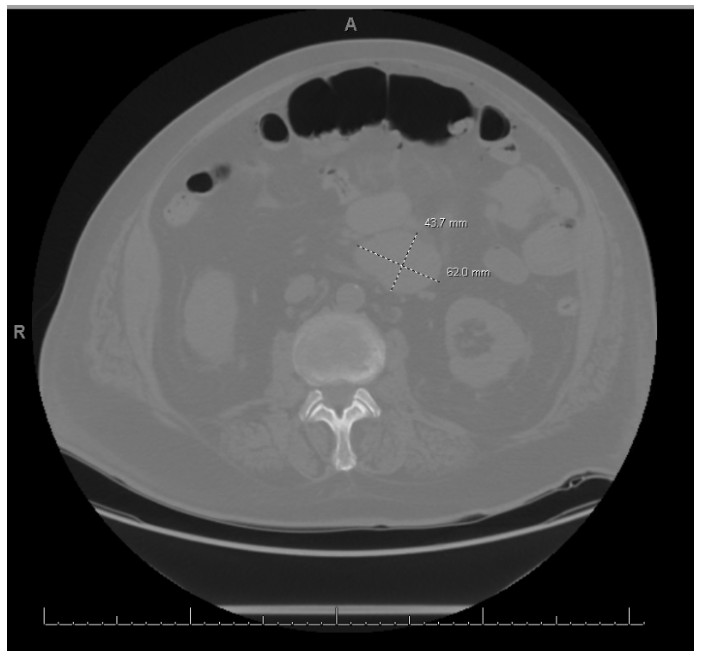Sunday Poster Session
Category: Small Intestine
P1990 - Lymphoma Lurking Beyond Reach in the Small Bowel
Sunday, October 26, 2025
3:30 PM - 7:00 PM PDT
Location: Exhibit Hall

Ingrid Rocha, BS (she/her/hers)
Wayne State School of Medicine
Detroit, MI
Presenting Author(s)
Ingrid Rocha, BS1, Hussan S. Ali, BS2, Suraj Suresh, MD3
1Wayne State School of Medicine, Detroit, MI; 2Wayne State University School of Medicine, Detroit, MI; 3Henry Ford Health, Detroit, MI
Introduction: Small bowel lymphoma (SBL) is a rare malignancy, accounting for only 0.6% of all gastrointestinal cancers, and often presents with nonspecific symptoms, making timely diagnosis challenging. Recent increases in reported incidence may reflect improved detection through advanced diagnostic modalities such as small bowel capsule endoscopy (SBCE) and device-assisted enteroscopy. While these tools have enhanced identification and management, their limitations—along with the absence of a diagnostic gold standard—continue to delay diagnosis. This case underscores the importance of maintaining a high index of suspicion in patients with recurrent hospitalizations and vague gastrointestinal complaints.
Case Description/
Methods: A 73-year-old male with a history of coronary artery disease (with stent placement), heart failure with reduced ejection fraction, and atrial fibrillation on apixaban presented with dyspnea and melena. He reported significant unintentional weight loss over six months and had been hospitalized multiple times for dyspnea, syncope, bloody stools, and abdominal pain. On admission, his hemoglobin was critically low at 5.8 g/dL. Initial push enteroscopy and colonoscopy were unrevealing. Subsequent SBCE identified a small, non-bleeding arteriovenous malformation and multiple raised, erythematous lesions in the small intestine. Shortly afterward, the patient developed a fever; blood cultures grew Staphylococcus epidermidis, and intravenous ceftriaxone was initiated. He then experienced acute abdominal pain and distension. CT imaging revealed intraperitoneal free air and a large 16×13 cm mass involving the proximal ileum and distal jejunum, consistent with lymphoma (Figure 1). The patient opted for palliative care and was discharged to hospice, where he passed away two weeks later.
Discussion: This case highlights the diagnostic challenge of SBL, particularly in older adults with nonspecific symptoms such as anemia, melena, and abdominal pain. Traditional endoscopic evaluations are frequently inconclusive, often delaying diagnosis and worsening prognosis. Here, a protracted course of vague symptoms ultimately culminated in the identification of an advanced small bowel mass. Earlier consideration of small bowel malignancy and refinement of diagnostic algorithms may improve outcomes in this increasingly recognized, yet still elusive, malignancy.

Figure: Figure 1: CT Abdomen and Pelvis without contrast depicting suspected lymphoma
Disclosures:
Ingrid Rocha indicated no relevant financial relationships.
Hussan Ali indicated no relevant financial relationships.
Suraj Suresh indicated no relevant financial relationships.
Ingrid Rocha, BS1, Hussan S. Ali, BS2, Suraj Suresh, MD3. P1990 - Lymphoma Lurking Beyond Reach in the Small Bowel, ACG 2025 Annual Scientific Meeting Abstracts. Phoenix, AZ: American College of Gastroenterology.
1Wayne State School of Medicine, Detroit, MI; 2Wayne State University School of Medicine, Detroit, MI; 3Henry Ford Health, Detroit, MI
Introduction: Small bowel lymphoma (SBL) is a rare malignancy, accounting for only 0.6% of all gastrointestinal cancers, and often presents with nonspecific symptoms, making timely diagnosis challenging. Recent increases in reported incidence may reflect improved detection through advanced diagnostic modalities such as small bowel capsule endoscopy (SBCE) and device-assisted enteroscopy. While these tools have enhanced identification and management, their limitations—along with the absence of a diagnostic gold standard—continue to delay diagnosis. This case underscores the importance of maintaining a high index of suspicion in patients with recurrent hospitalizations and vague gastrointestinal complaints.
Case Description/
Methods: A 73-year-old male with a history of coronary artery disease (with stent placement), heart failure with reduced ejection fraction, and atrial fibrillation on apixaban presented with dyspnea and melena. He reported significant unintentional weight loss over six months and had been hospitalized multiple times for dyspnea, syncope, bloody stools, and abdominal pain. On admission, his hemoglobin was critically low at 5.8 g/dL. Initial push enteroscopy and colonoscopy were unrevealing. Subsequent SBCE identified a small, non-bleeding arteriovenous malformation and multiple raised, erythematous lesions in the small intestine. Shortly afterward, the patient developed a fever; blood cultures grew Staphylococcus epidermidis, and intravenous ceftriaxone was initiated. He then experienced acute abdominal pain and distension. CT imaging revealed intraperitoneal free air and a large 16×13 cm mass involving the proximal ileum and distal jejunum, consistent with lymphoma (Figure 1). The patient opted for palliative care and was discharged to hospice, where he passed away two weeks later.
Discussion: This case highlights the diagnostic challenge of SBL, particularly in older adults with nonspecific symptoms such as anemia, melena, and abdominal pain. Traditional endoscopic evaluations are frequently inconclusive, often delaying diagnosis and worsening prognosis. Here, a protracted course of vague symptoms ultimately culminated in the identification of an advanced small bowel mass. Earlier consideration of small bowel malignancy and refinement of diagnostic algorithms may improve outcomes in this increasingly recognized, yet still elusive, malignancy.

Figure: Figure 1: CT Abdomen and Pelvis without contrast depicting suspected lymphoma
Disclosures:
Ingrid Rocha indicated no relevant financial relationships.
Hussan Ali indicated no relevant financial relationships.
Suraj Suresh indicated no relevant financial relationships.
Ingrid Rocha, BS1, Hussan S. Ali, BS2, Suraj Suresh, MD3. P1990 - Lymphoma Lurking Beyond Reach in the Small Bowel, ACG 2025 Annual Scientific Meeting Abstracts. Phoenix, AZ: American College of Gastroenterology.
